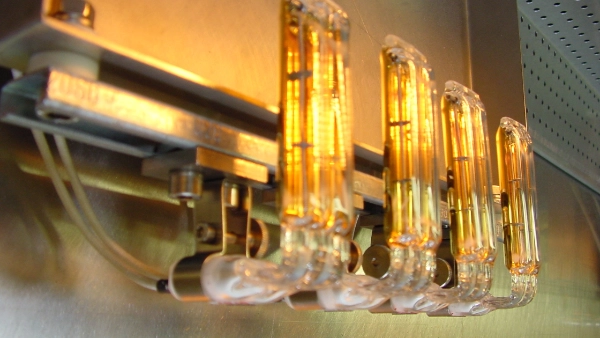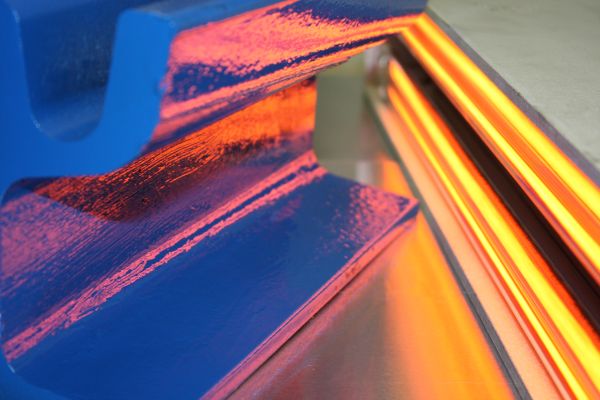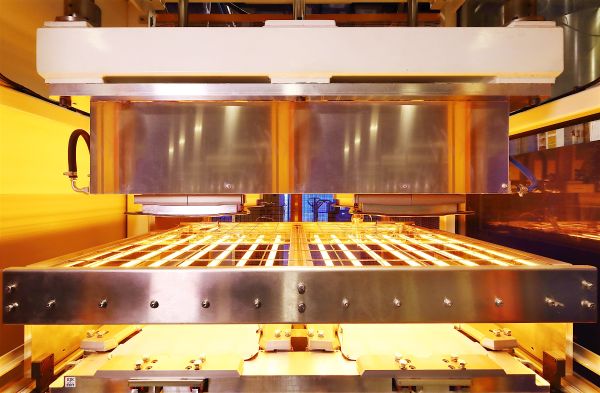Infrared: Targeted heat on the spot
Countless industrial processes require heat: curing powder coatings, drying wet paint, welding plastics - these are just a few examples. It is important that at the touch of a button the energy reaches the right place at the right time. This is exactly what infrared systems can do. They adapt perfectly to highly specialized processes and heat contactless and within seconds.
Infrared technology is based on the transmission of electromagnetic waves which generate heat in the process. Part of the rays is absorbed in the material; part is reflected and the rest penetrates the materials. Only the absorbed rays contribute to heating. The range in which the electromagnetic rays are best absorbed is called the absorption spectrum. It varies from material to material.

Our contribution: Customized infrared solutions
Heraeus Noblelight develops infrared light solutions that are precisely tailored to the material and product. The better the emission spectrum of an infrared emitter and the absorption spectrum match, the faster and more efficiently the material is heated. "Technical light can be used to stop an unnecessary waste of energy," explains Roland Eckl, Managing Director of Heraeus Noblelight. "Rapid heating and low space requirements make infrared systems an attractive heat source." What's more: switching from a gas-powered plant to an infrared system that runs on a green electricity mix goes hand in hand with a significant reduction of CO2 emissions.
Since infrared heat is so versatile, it is used in various processes such as coating, welding, drying or hardening. In metal processing, an extremely energy-intensive industry, many heating processes are necessary. In this example, infrared radiation can specifically heat the coating and surfaces: The coating dries, and the metal part remains relatively cool inside. This accelerates the drying process and improves energy efficiency.
The advantages of the technology are particularly evident in the curing of large metal components. In contrast to convection ovens, which heat the entire metal part, infrared heating targets specifically the surface of the substrate. This reduces the energy consumption significantly.

More than 70 percent energy savings
Infrared systems adapt perfectly to highly specialized processes. In plastics processing too, it is beneficial to apply heat only where it is needed. Plastics can be shaped, joined or deburred by heat. Processing plastics using conventional methods is very energy intensive. Infrared systems can significantly improve energy efficiency. For example, the automotive industry can benefit from this, because a lot of plastic parts are used in vehicle construction. Whether in the production of dashboards, seat panels or door handles: Infrared solutions transfer energy contactless into the product and generate heat exactly where it is needed.
Modern infrared systems can go into operation in seconds, without preheating and standby. "By switching from conventional systems such as gas-fired ovens to infrared heating technology, more than 70 percent of energy can be saved," says Heraeus expert Eckl. "Thus, infrared technology makes a significant contribution to sustainability in industrial manufacturing."


